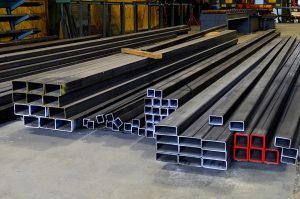
Drawing is a common metalworking process performed by manufacturing companies. It’s able to extend the length of metal by pulling and stretching the metal. It’s called “drawing” because the machine “draws” the metal towards it. As the metal stretches, it becomes longer and thinner. Once the desired shape has been achieved, the metal is removed from the machine.
Of course, that’s just the basics of drawing. There are several different methods using in drawing, each of which requires a different approach.
Cold Drawing
Cold drawing involves stretching metal at room temperature. Contrary to what some people believe, drawing typically isn’t performed on heated metal. Instead, it’s performed on room-temperature metal. Known as cold drawing, it’s a highly effective metalworking process for manipulating the shape of metal. Compared to hot drawing, cold drawing offers greater accuracy and without jeopardizing the metal’s strength or other physical properties.
Sheet Metal Drawing
As you may have guessed, sheet metal drawing is used to produce sheet metal. While pressure is applied to the blank, the drawing machine stretches the metal to the desired size and shape. Using the right amount of pressure is essential to sheet metal drawing, as it affects the metal’s size. The more pressure applied, the thinner the sheet metal becomes. Failure to apply enough pressure, however, will result in the sheet metal being too thick. Sheet metal drawing is a type of cold drawing since it involves stretching metal at room temperature.
Bar Drawing
Bar drawing is used to produce bar-shaped objects by stretching metal. The base metal is fed through a die — the die is typically located on a draw bench — which stretches it. Only after the metal has achieved the appropriate shape will it pass through the opposite end of the die. Bar drawing is performed on a variety of metals, some of which include steel, copper, aluminum and alloys.
Deep Drawing
Deep drawing is the same as sheet metal drawing except it stretches the metal longer than its diameter. As a result, deep drawing is a more complex process that requires extra attention. It’s typically performed by feeding metal into a die using a mechanical punch. The punch forces the metal to change into the shape of the die. Deep drawing, however, is characterized by the creation of a metal object that’s longer than its diameter.
All metalworking processes involve the shape manipulation of metal, and drawing is no exception. It’s able to pull and stretch metal to make it longer and thinner.
